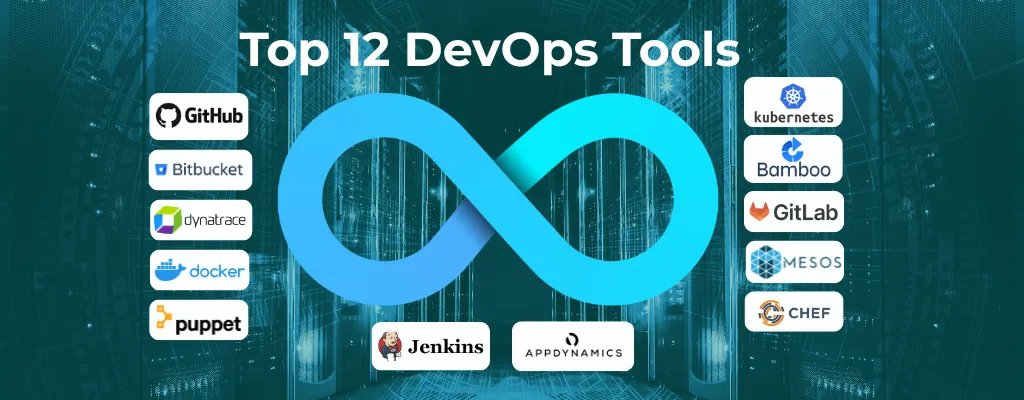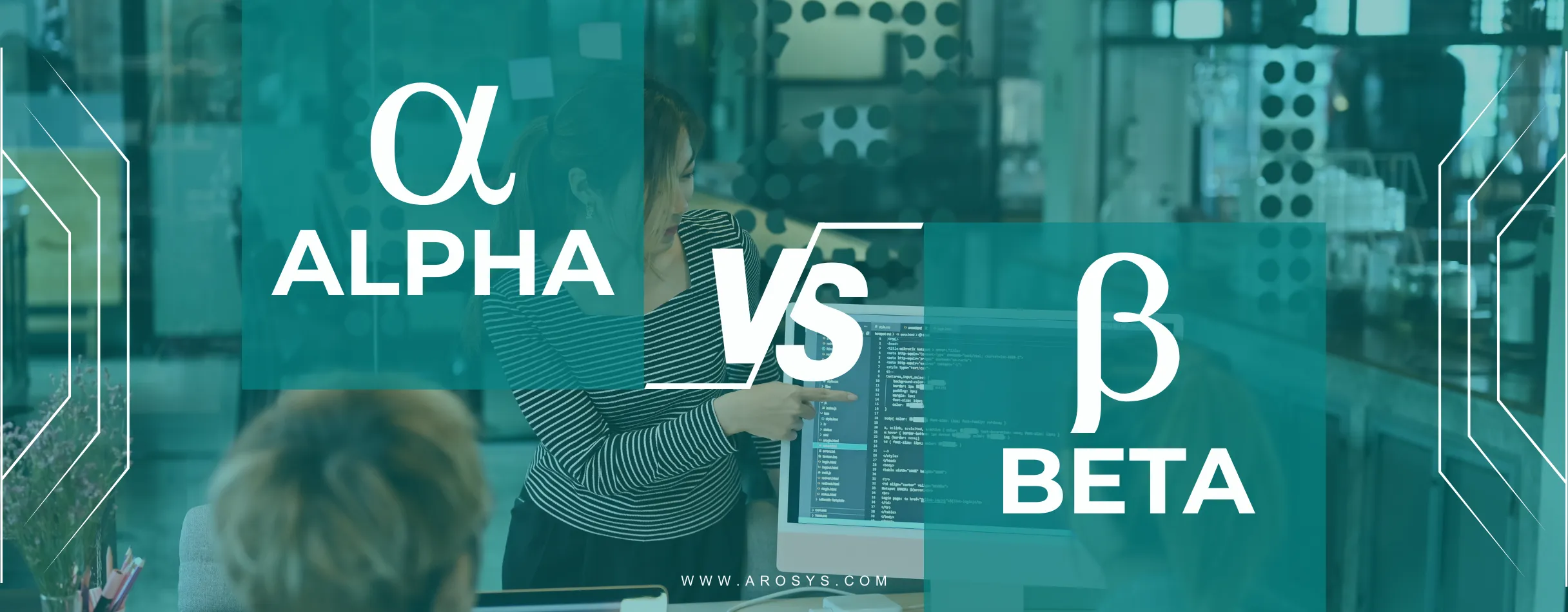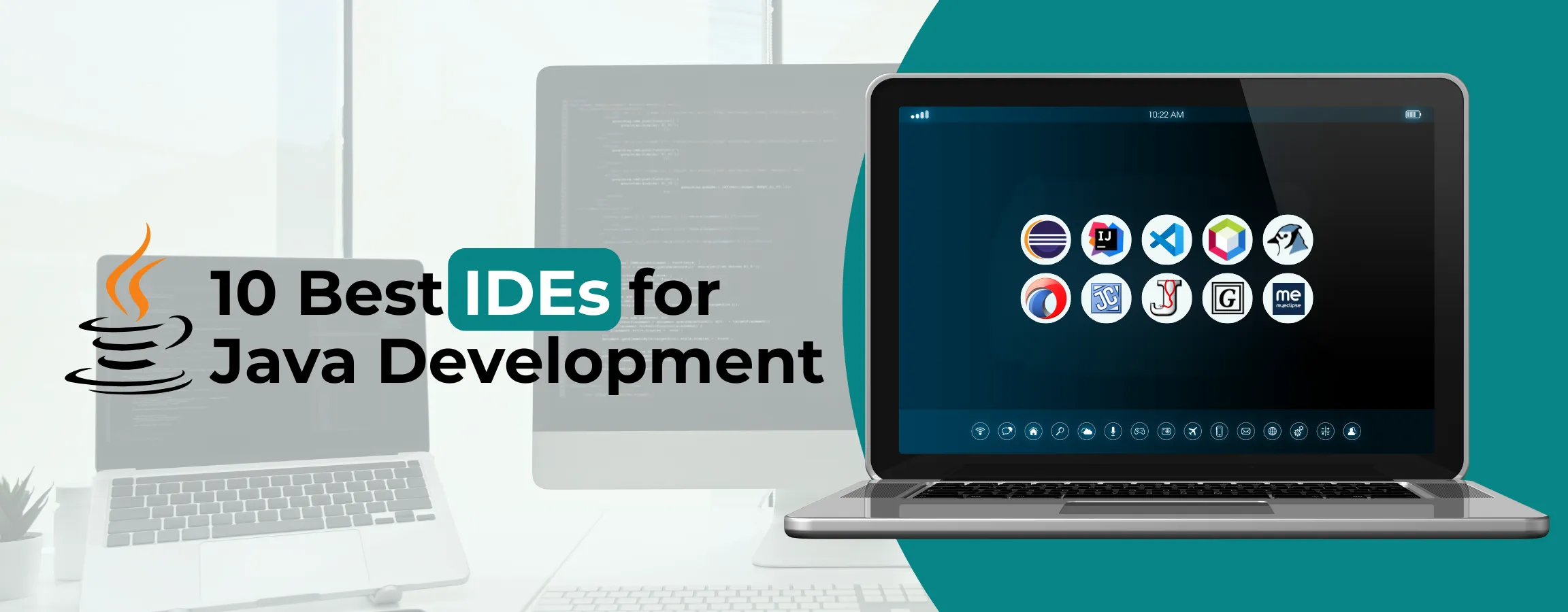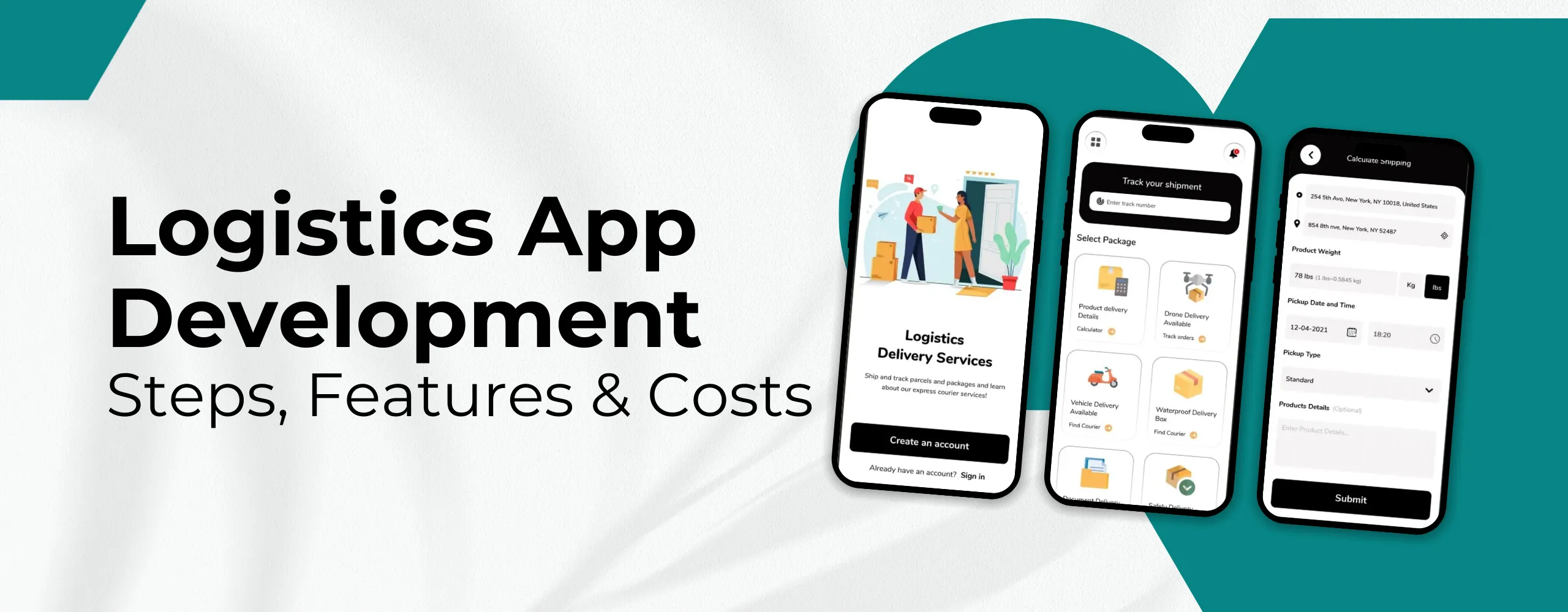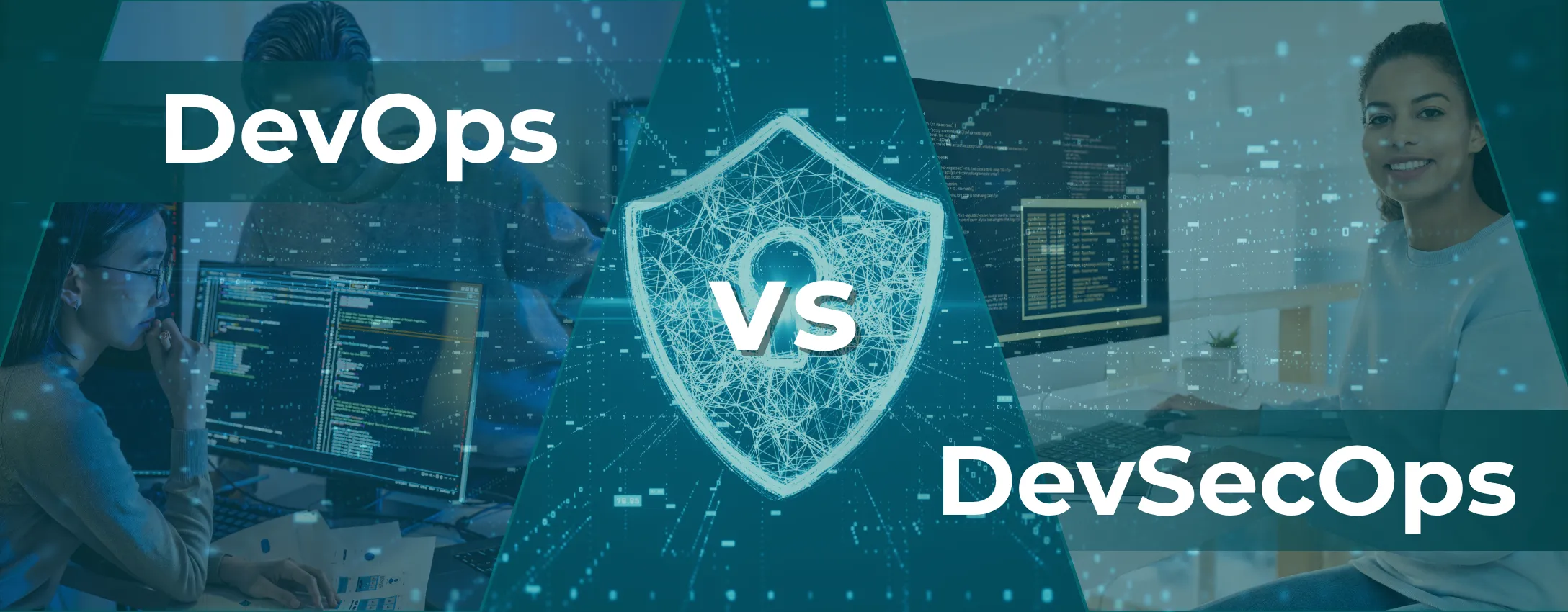
Stepping into the sector of DevOps can be overwhelming. With countless acronyms, equipment, and buzzwords, it’s easy to wander away before everything.
As groups discover automation, collaboration, and quicker delivery, at any other time period frequently appears — DevSecOps. It sounds similar, but it brings something more: security built into every stage of development.
Understanding the distinction between DevOps and DevSecOps isn’t just about definitions. It’s about finding what fits your task goals and how your team works excellently.
What is DevOps?
DevOps collectively brings two core capabilities — development and operations.
In the beyond, developers focused on writing code, whilst the operations group controlled deployment, servers, and renovation. Since both teams worked one by one, it frequently brought about miscommunication and slower transport.
DevOps bridges that gap, growing a shared system where improvement and operations collaborate from beginning to finish. As a result, software releases had been gradual and full of last-minute issues.
DevOps changes that.
It brings each group collectively under one shared procedure and tradition.
Instead of operating one at a time, tech developers and operations engineers collaborate from the very beginning—from making plans and coding to trying out, deployment, and monitoring.
The goal is simple:
👉 Deliver first-rate software programs quickly, more effectively, and with fewer errors.
Key principles of DevOps:
Collaboration between teams
DevOps gets rid of the space between developers and operations teams. Instead of running in silos, absolutely everyone collaborates in the direction of a shared aim — building, checking out, and turning in higher software programs collectively.
Continuous Integration and Delivery (CI/CD)
With CI/CD, code updates are robotically tested and driven live in smaller, frequent releases. This continues the easy method and guarantees users get new capabilities and fixes faster, without long delays or guide work.
Automation
DevOps relies heavily on automation — from testing and deployment to infrastructure setup. This reduces human errors and saves time.
Faster feedback loops
Every time a change is made, the system provides instant feedback through automated tests and monitoring tools. Issues are found out early, long before they turn into bigger risks.
What is DevSecOps?
It merges the principles of development, security, and operations under one framework.
It’s basically DevOps with safety built in from the very start.
In conventional DevOps, the principal goal is pace — getting capabilities to users fast. But safety regularly comes at the cease of the system, simply before release. That way vulnerabilities are probably observed too past due, when fixes are tougher and more pricey.
DevSecOps changes this approach.
It makes safety every person’s responsibility — not simply the security team’s.
From the instant code is written to the time it’s deployed, security tests are a part of every step.
Key principles of DevSecOps:
Security built into the pipeline
Security systems automatically scan code, dependencies, and configurations as part of the CI/CD process. This helps to catch weaknesses early.
Shift-left approach
Security testing moves to the “left” side of the development timeline — meaning it happens early, during development, not after.
Automation of security tasks
DevSecOps uses automation for security scans, compliance assessments, and patch control, retaining the whole thing constantly and efficiently.
Collaboration across teams
Developers, protection experts, and operations engineers work collectively. Everyone is accountable for protecting the utility and records.
Continuous monitoring and improvement
After deployment, nonstop checks assist stumble on and respond to capability protection issues.
Key Differences Between DevOps and DevSecOps
DevOps and DevSecOps share the equal purpose — quicker, more reliable software shipping.
The most important difference lies in how they deal with safety.
While DevOps specializes in speed and automation, DevSecOps builds protection into each level of the technique.
It’s the shift from releasing rapidly to releasing speedily and safely.
| Aspects | DevOps | DevSecOps |
|---|---|---|
| Focus | Speed, automation, and collaboration | Security integrated with speed and automation |
| Security Role | Added at the end of the process | Embedded from the very beginning |
| Goal | Deliver software faster | Deliver software faster and more securely |
| Responsibility | Development and Operations teams | Development, Security, and Operations teams |
| Approach | Reactive — fix security issues after detection | Proactive — prevent security issues early |
| Tools | CI/CD, monitoring, and automation tools | CI/CD plus security scanning and compliance tools |
Here is the clear explanation:
Focus
DevOps mainly focuses on pace, collaboration, and automation. The intention is to deliver software program updates faster by breaking down silos between improvement and operations teams.
DevSecOps, however, adds security into that mix. It focuses on maintaining velocity without compromising protection. In DevSecOps, every step — from coding to deployment — includes integrated safety tests.
Security Role
In DevOps, safety is commonly treated closer to the stop of the development technique. Teams end building the software first after which perform vulnerability scans or penetration testing before release.
DevSecOps flips that method. It brings security into the earliest stages — throughout design, coding, checking out, and deployment. This means security isn’t a separate task however a continuous, shared obligation throughout the pipeline.
Goal
The predominant intention of DevOps is to reap quicker and more productive delivery. It’s approximately quick releases, continuous integration, and clean deployments.
DevSecOps shares that same speed goal but adds another — to deliver securely. It aims to release software programs quickly and appropriately, making sure that potential vulnerabilities are struck early, not after deployment.
Responsibility
In a traditional DevOps setup, most effective builders and operations teams are actively worried. Developers write code, and operations manage deployment and infrastructure.
In DevSecOps, a third key player joins in — the security team. But it’s not just their job anymore. Security becomes everyone’s responsibility. Developers write secure code, operations maintain safe environments, and security experts guide and automate protection measures throughout.
Approach
DevOps regularly takes a reactive technique to protection — which means problems are constant once they’re located. This can, on occasion, lead to overdue discoveries and steeply priced patches.
DevSecOps is proactive. It prevents security flaws before they take place by embedding computerized scans, testing tools, and compliance assessments directly into the CI/CD pipeline. Problems are caught early, saving time and fending off primary dangers later.
Popular Tools Used in DevOps
DevOps is based heavily on automation and collaboration systems to make software delivery faster, extra steady, and errors-unfastened.
Here’s what every device does and why it topics:
1. Jenkins – Continuous Integration
Jenkins is one of the most widely used DevOps software.
It allows developers to robotically construct, test, and install code each time modifications are made.
This guarantees new updates are included easily without breaking the existing device.
2. Docker – Containerization
Docker lets developers package deal utility in conjunction with the whole thing it desires to run into light-weight containers.
These containers behave consistently across distinct environments — whether or not it’s a nearby machine, a testing server, or the cloud.
This method gets rid of the traditional “it really works on my machine” trouble and makes deployment plenty smoother.
3. Kubernetes – Container Orchestration
Kubernetes works along with Docker.
It enables managing, scale, and installing packing containers robotically across more than one server.
If one field fails, Kubernetes spins up some other — preserving programs to run easily.
4. Git – Version Control
Git tracks every trade inside the codebase.
It lets in more than one builder to work on the equal challenge without overwriting each other’s code.
With Git, teams can roll back to preceding versions and collaborate efficiently using platforms like GitHub or GitLab.
5. Ansible / Puppet / Chef – Configuration Management
These tools automate the setup and control of servers.
Instead of manually configuring systems, DevOps teams write scripts that outline how servers ought to appear and behave.
This guarantees consistency throughout environments and saves quite a bit of guide effort.
6. Terraform – Infrastructure as Code (IaC)
Terraform allows teams to outline and manage cloud infrastructure using code.
You can create servers, databases, and networks robotically, in preference to setting them up by hand.
It makes scaling up or converting environments quick, secure, and repeatable.
7. Prometheus / Grafana – Monitoring and Metrics
Prometheus collects actual-time performance records from packages and infrastructure.
Grafana visualizes that information through dashboards, helping teams spot problems speedy.
Together, they supply a complete view of system fitness and performance.
Popular Tools Used in DevSecOps
DevSecOps is based on automation and clever tools to make safety part of every step in software program improvement.
Here’s a brief have a look at some extensively used equipment and what they do:
1. SonarQube – Code Quality and Vulnerability Scanning
SonarQube permits builders to preserve great and stable code.
It analyzes the source code to stumble on capacity bugs, security flaws, and negative coding patterns.
The device additionally connects seamlessly with CI/CD pipelines, offering short feedback during the development process — long before the code is going live.
2. Snyk – Dependency and Open-Source Security
Snyk focuses on securing open-supply libraries and dependencies.
It scans your project for known vulnerabilities in third-party packages and indicates short fixes.
Snyk also keeps monitoring your code even after deployment to catch new risks.
3. Aqua Security – Container Security
Aqua Security allows safeguarding containerized and Kubernetes-based programs.
It scans field pics to identify capacity vulnerabilities and verifies that they agree to security standards before deployment.
It also monitors running workloads for suspicious behavior or attacks.
4. HashiCorp Vault – Secrets Management
Vault is used to stabilize and control private information which includes passwords, API keys, and get right of entry to tokens.
Rather than preserving those secrets in code or configuration documents, it encrypts them and strictly controls who can get entry to them.
This allows for safe touchy data and decreases the risk of leaks or unauthorized use for the duration of deployment.
5. OWASP ZAP – Web Application Security Testing
OWASP ZAP scans web apps for security flaws.
It spots issues like SQL injection, XSS, and weak logins.
You can add it to CI/CD to run automatic checks.
6. Anchore – Image Scanning
Anchore scans field photos to come across protection vulnerabilities, outdated applications, or policy violations.
It guarantees that most effective dependent and verified images are utilized in manufacturing.
7. Checkmarx – Static Code Analysis
Checkmarx analyzes supply code to locate safety vulnerabilities earlier than the code is compiled.
It helps developers discover and fix troubles early inside the development cycle.
It helps more than one language and integrates with popular development tools and CI/CD pipelines.
When to Use DevOps
DevOps is the right desire whilst speed and performance are your most important goals.
If your product requires frequent updates, brief releases, and non-stop upgrades, DevOps helps you attain that.
It’s quality is ideal for groups that need to:
- Deliver new features rapidly
- Automate builds, trying out, and deployment
- Improve collaboration among developers and operations
If your assignment doesn’t address enormously sensitive statistics or strict compliance necessities, you could control security one by one.
For example, early-level startups regularly select DevOps to transport fast, check ideas fast, and live flexiblely.
In quick, DevOps works great for agile groups that want quicker results and may afford to deal with protection outside the primary workflow.
When to Use DevSecOps
DevSecOps is the better option when security is a top priority.
If your utility offers exclusive or non-public facts, protection can’t wait until the end of development.
This method is best for agencies in finance, healthcare, government, or agency tech, wherein facts protection and compliance are non-negotiable.
In DevSecOps, each level — from coding to deployment — consists of automated security exams and vulnerability scans.
It facilitates identifying risks early, reducing the price and effort of fixing them later.
That’s why corporations centered on long-time period reliability, agree with, and compliance pick DevSecOps.
In simple terms, use DevSecOps when you want to transport speedy — but safely.
Which One Should You Choose?
If your predominant intention is faster delivery and smoother collaboration, then DevOps is a tremendous place to start. It allows groups to launch updates quickly, automate workflows, and enhance efficiency.
But if your tasks handle sensitive data or require strong protection, DevSecOps is the smarter choice. It guarantees each release isn’t the most rapid but is also safe from threats and vulnerabilities.
Think of DevSecOps as the next step forward — an upgraded version of DevOps that blends speed with protection. As cyber dangers keep pushing upward, an increasing number of companies are adopting this technique to live in advance.
If you’re unsure which model fits your enterprise best, a trusted DevOps company can guide you. With the proper associate, you can build a process that’s both agile and steady — flawlessly aligned with your goals.





